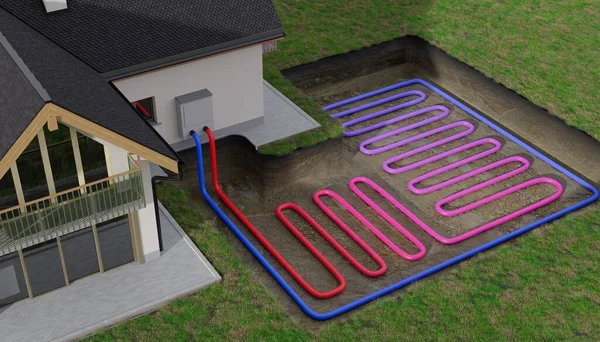Geothermal Heat Pumps take advantage of the stable heating of the ground. In many regions, the temperature of air on the surface will vary throughout the year, but just a couple meters underground, temperatures stay much more constant throughout the year. This causes underground temperatures to be warmer than the surface during Winter, and cooler during Summer. This means that the heating system is far more efficient than if surface air was used.
Geothermal heating systems come in many forms. There are two common types, closed, and open loop systems. Closed looped systems pump water or antifreeze solution through high density plastic tubing, which can then reach a heat exchanger which transfers heat between the pump and the liquid. The tubing can be installed in a variety of ways.

Horizontal systems are typically the most affordable method of installing a loop of piping. Vertical systems are more fit for large commercial use, but are more expensive and difficult to install. Underwater systems can be a good option for sites with supple bodies of water. Horizontal loop systems can cost between $15000 to $30000. Vertical loops are a bit more costly, being between $20000 to $35000. Underwater systems cost depends on the body of water.
Another option is an open loop system, which operates a little differently, and requires a sufficient amount of water. Open loop systems can be between $10000 to $25000.
Admittedly, installation of a geothermal heat pump system is more costly than a typical air source heat pump (ASHP), but the systems require less maintenance, and are more durable. They also run quieter than ASHP’s will, and additionally any geothermal heating system with Energy Star certification is eligible for 30% tax credit until January 1, 2033.
